All You Need To Know About THE FORT OF FATEHPUR SIKRI
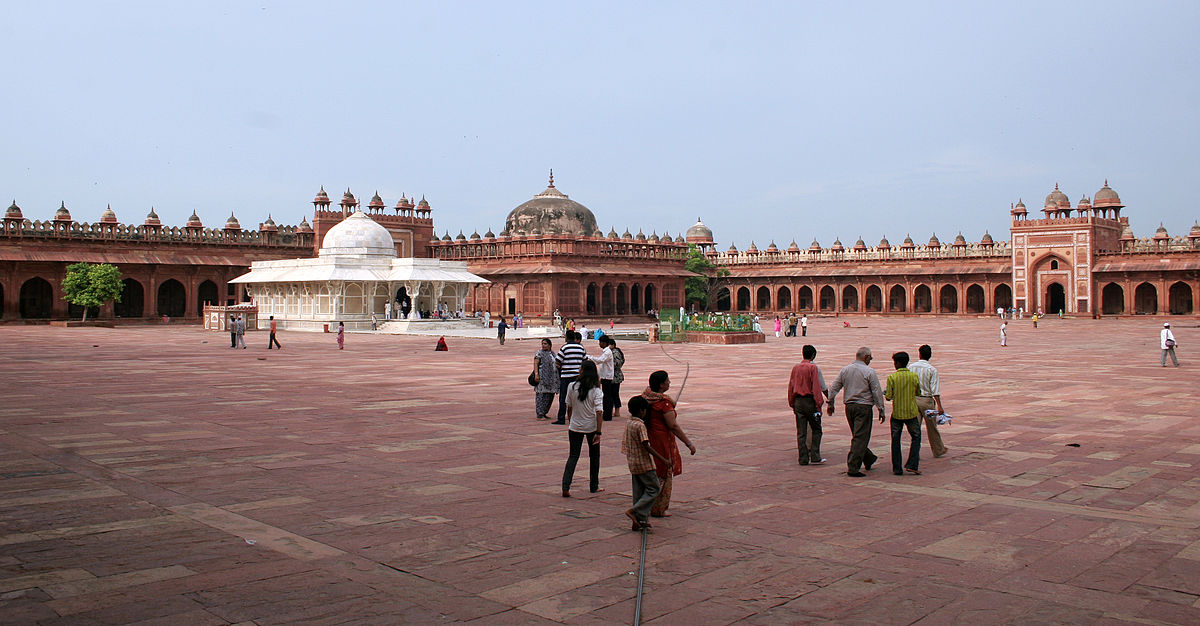
This Palce is a historical town in the Agra district of Uttar Pradesh. It was once the capital of the mighty Mughal Empire under Akbar. Akbar named it Fatehpur Sikri or the ‘city of victory’ following his victorious campaign in Gujarat in 1573. Most of the town’s historical architecture dates from the time when it served as the Mughal capital from 1571 to 1585.
The massive Fatehpur Sikri fort houses all the interesting tourist spots. A Fatehpur Sikri tour is thus a rewarding experience for those who love the fascinating Mughal history. Sightseeing in Fatehpur Sikri is a matter of a day if planned well. Hence it is helpful to look up the Fatehpur Sikri tour guides available online or at the government tourism offices before you plan a visit to this town.
Here are top 5- Places to visit in Fatehpur Sikri:-
-
Panch Mahal

Panch Mahal Sikarwar Rajputs built Fatehpur Sikri before Akbar took over. Panch Mahal is a structure that dates from the time of the Rajputs. The name translates into ‘the tower that catches wind’. It is a four-story structure that rests on the ground structure with 84 columns. It arranges each story one above the other in decreasing size. Panch Mahal is close to the harem. The columns had screens or ‘jalis’ in between them that acted as ‘purdah’ for the queens when they enjoyed the cool breeze in Panch Mahal.
Famous for:
- The mighty structure on columns that stood the test of time and is proof of the architectural prowess of those times.
Visiting hours:
- It is open from 7 AM to 7 PM
Duration of visit:
- Depending on your enthusiasm about history and love of photography, it might take you from 1 to 2 hours to explore.
Tickets:
One has to pay an entry fee to visit the Fatehpur Sikri fort. For all the separate locations inside the fort, entry is free for all
-
Diwan-i-Khas and the Lotus throne
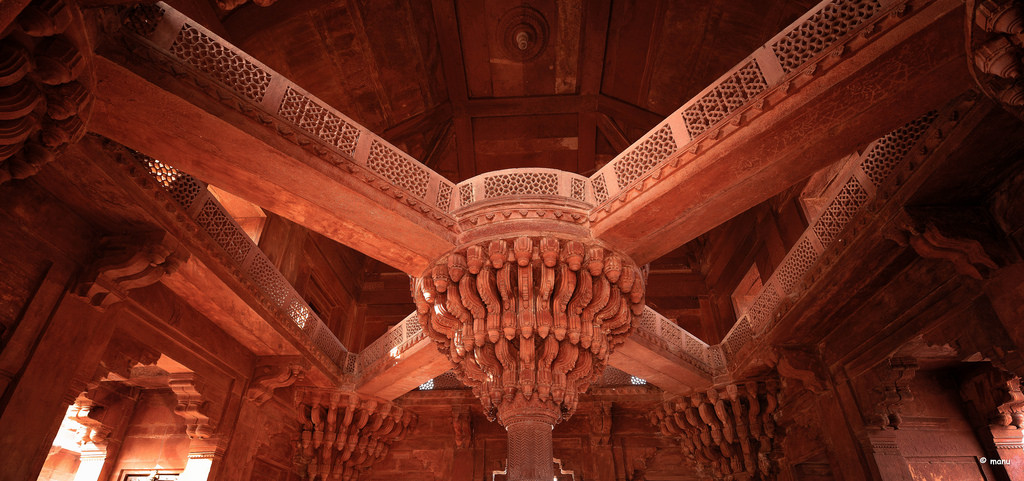
This is the hall of the private audience where the emperor discussed the issues of the day with his ministers. It is located in the north-east area of the massive Fatehpur Sikri fort complex. It is a red sandstone structure that has four double-storeyed façades. There is a central platform attached to a pillar with a set of 36 arch-shaped and pensile brackets that hold it up.
It believes that the emperor would sit on this platform, among his courtiers who sat in the diagonal galleries around it. This structure is famous as the Lotus throne. There are four beautiful kiosks at each corner above the constructed circular domes. There is an alternate theory that this structure was used as a treasury that housed the most precious gems and jewels of the emperor.
Famous for:
- The pillar in the center, also known as the Lotus throne is considered as one of the masterpieces of Mughal architecture
Visiting hours:
- It is open from 7 AM to 6 PM
Duration of visit:
- Less than 1 hour
Tickets:
- No further entry fee is charged beyond the fort entry fee
-
Buland Darwaza
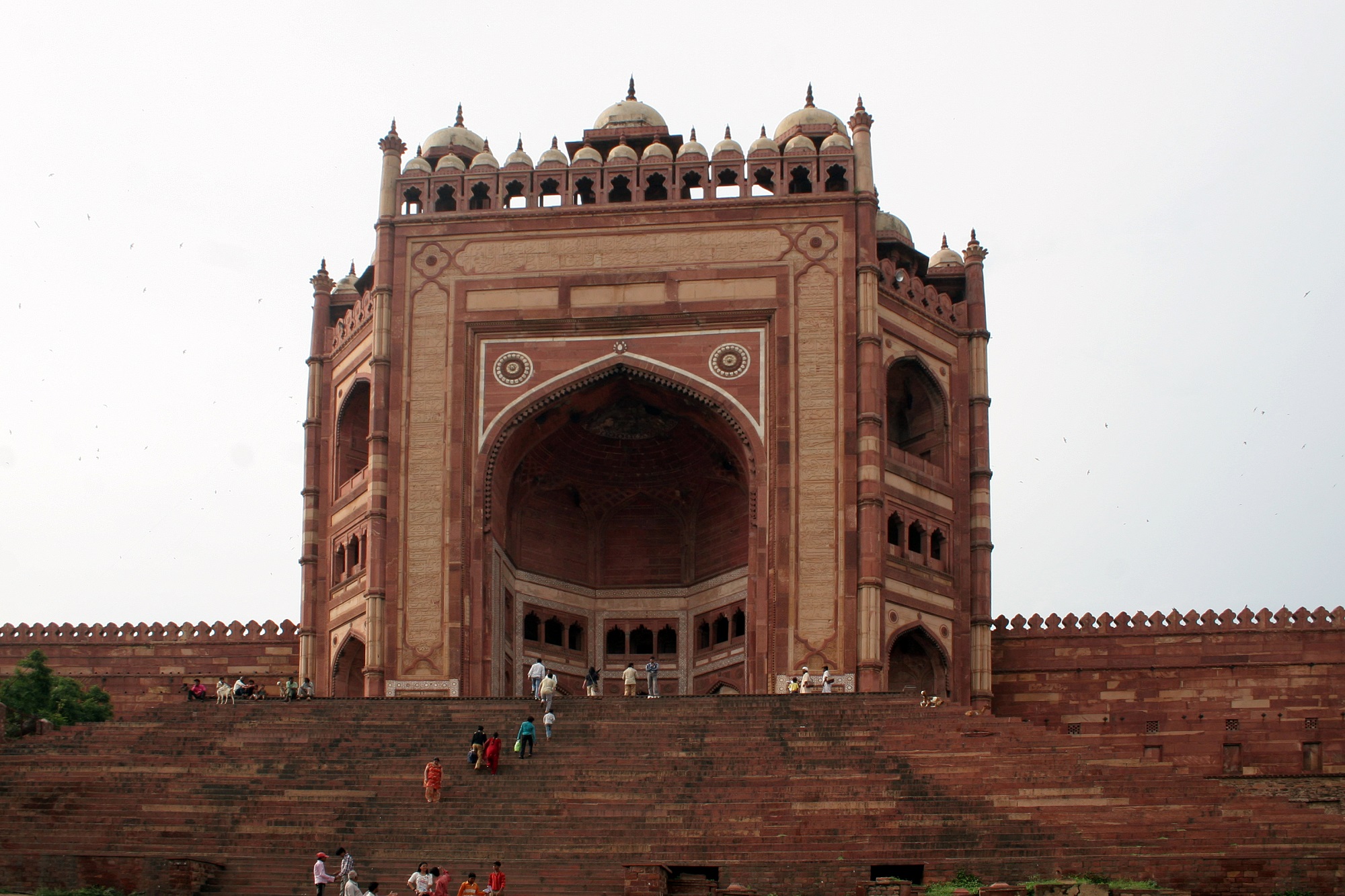
This is the highest gateway in the world. Akbar built it to commemorate his victory in Gujarat in 1573. The overall structure is made of red sandstone and decorated with white and black marble. Buland Darwaza is the main entrance to the Fatehpur Sikri fort.
Famous for:
- Its massive structure
Visiting hours:
- It is open from 7 AM to 7 PM, same as the fort
Duration of visit:
- Less than 1 hour
Tickets:
- No further entry fee is charged beyond the fort entry fee
-
Jodha Bai’s Palace
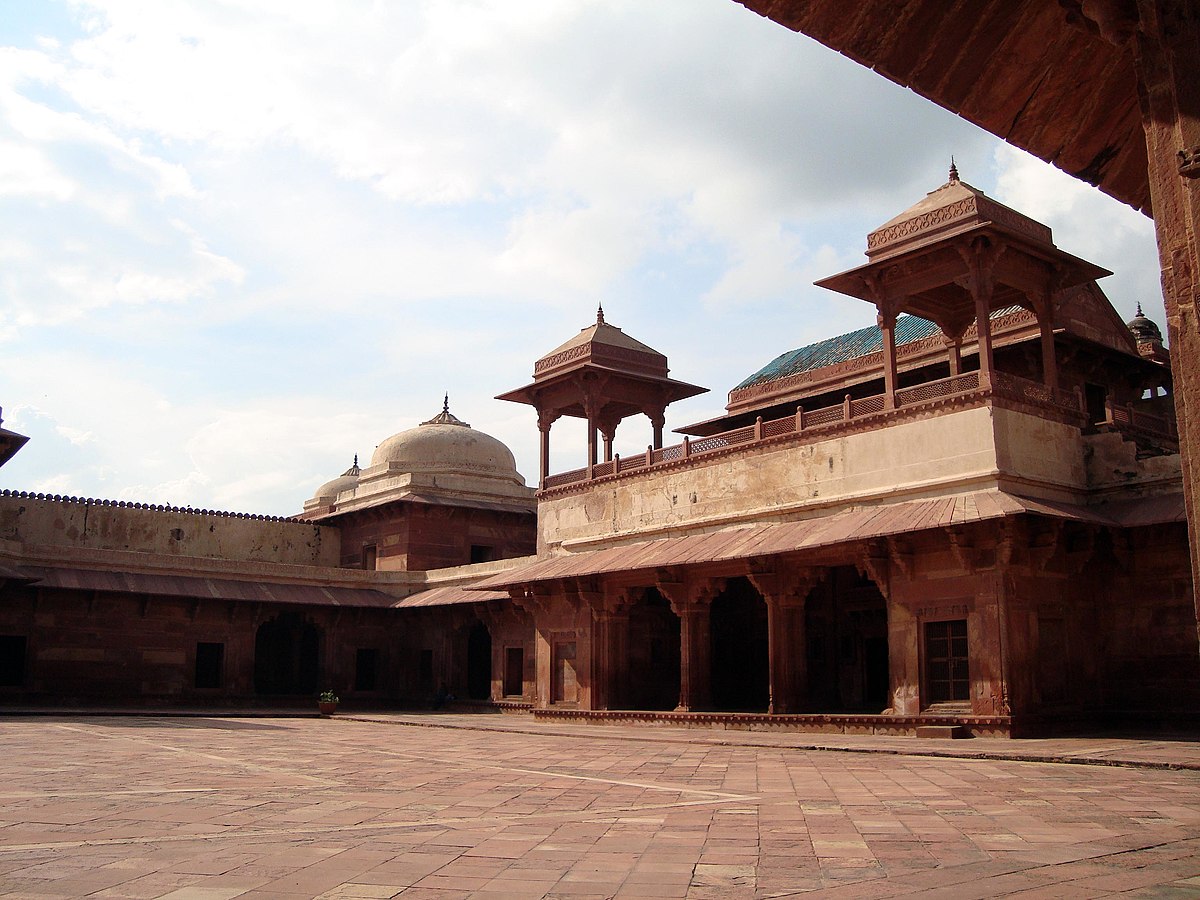
This palace has a large and open palace complex. Also Known as central structure of the Fatehpur Sikri fort’s harem. Hence comprises several apartments made up of red sandstone and linked by courtyards. Jodha Bai palace has many inner courtyards.
Famous for:
- It is the palace of Akbar’s Rajput queen Mariam-Uz-Zamani, who was also famously known as Jodha Bai
Visiting hours:
- It is open from 7.30 AM to 6 PM
Duration of visit:
- Less than 1 hour
Tickets:
- No further entry fee is charged beyond the fort entry fee
-
Khwabgah
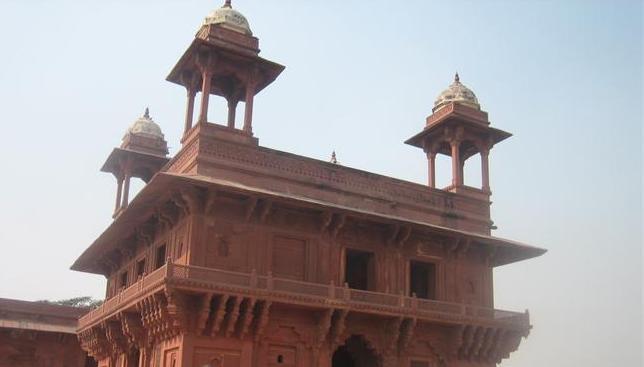
The Khwabgah is known as the dream palace is one of the most beautiful structures of the Fatehpur Sikri fort. This was built specially for Akbar which housed his private chambers. To facilitate the emperor’s day they linked to day activities to the Daftar Khana or office. It also connected it to the Panch Mahal and the harem through an enclosed passage. This complex also had the royal Utub Khana or library. The emperor’s private chamber is decorated with carved panels and mural paintings.
Famous for:
- Akbar’s private chambers
Visiting hours:
- It is open from 7 AM to 6 PM
Duration of visit:
- It takes about 1 hour
Tickets:
- No further entry fee is charged beyond the fort entry fee
The Fatehpur Sikri fort entry fees are as follows:
- 40 INR for every Indian citizen
- 550 INR for every foreign citizen
- No fee is required for children below 15 years

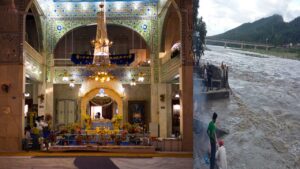

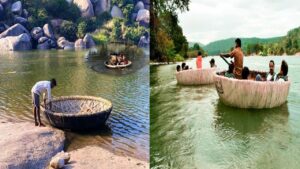





Nice